 |
AGGREGATE DEMAND AND AGGREGATE SUPPLY (Continued…): |
| << AGGREGATE DEMAND AND AGGREGATE SUPPLY:When prices are sticky |
| AGGREGATE DEMAND AND AGGREGATE SUPPLY (Continued…): >> |
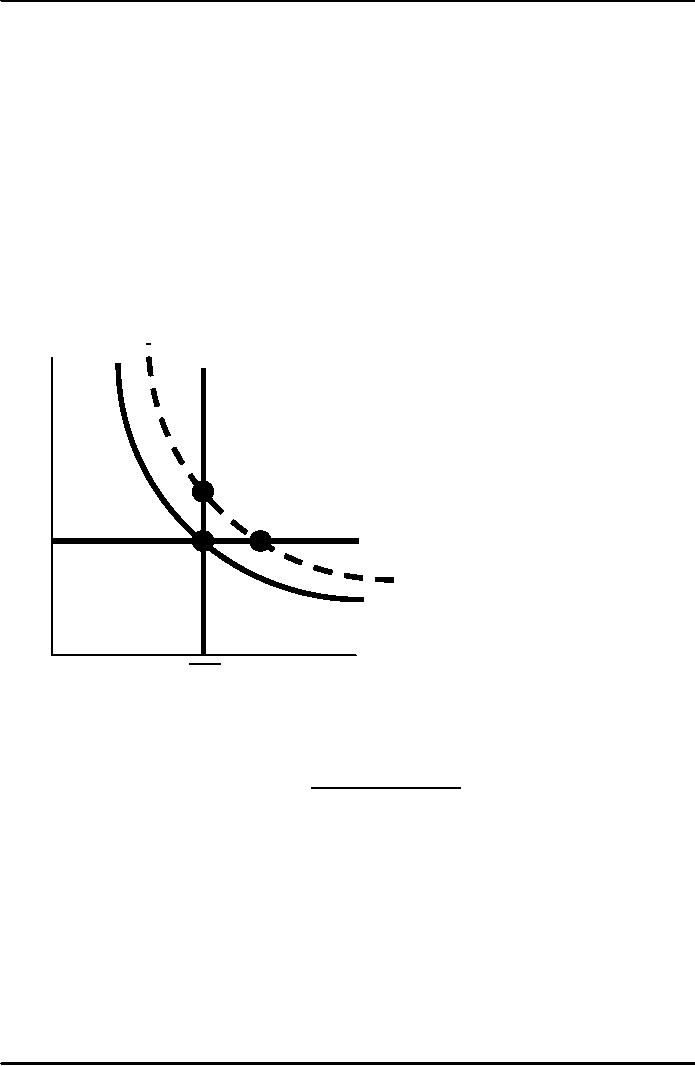
Macroeconomics
ECO 403
VU
LESSON
25
AGGREGATE
DEMAND AND AGGREGATE SUPPLY
(Continued...)
How
shocking!!!
Shocks:
exogenous changes in aggregate
supply or demand
Shocks
temporarily push the economy
away from
full-employment.
A
demand shock
�
The
economy begins in long-run
equilibrium at point A. An increase in
aggregate demand,
due
to an increase in the velocity of
money, moves the economy
from point A to point
B,
where
output is above its natural
level. As prices rise,
output gradually returns to
its natural
rate,
and the economy moves
from point B to point
C.
LRAS
P
C
SRAS
B
AD'
A
AD
Y
Y
�
Exogenous
decrease in velocity
�
If
the money supply is held
constant, then a decrease in V
means people will be using
their
money
in fewer transactions, causing a
decrease in demand for goods
and services:
102
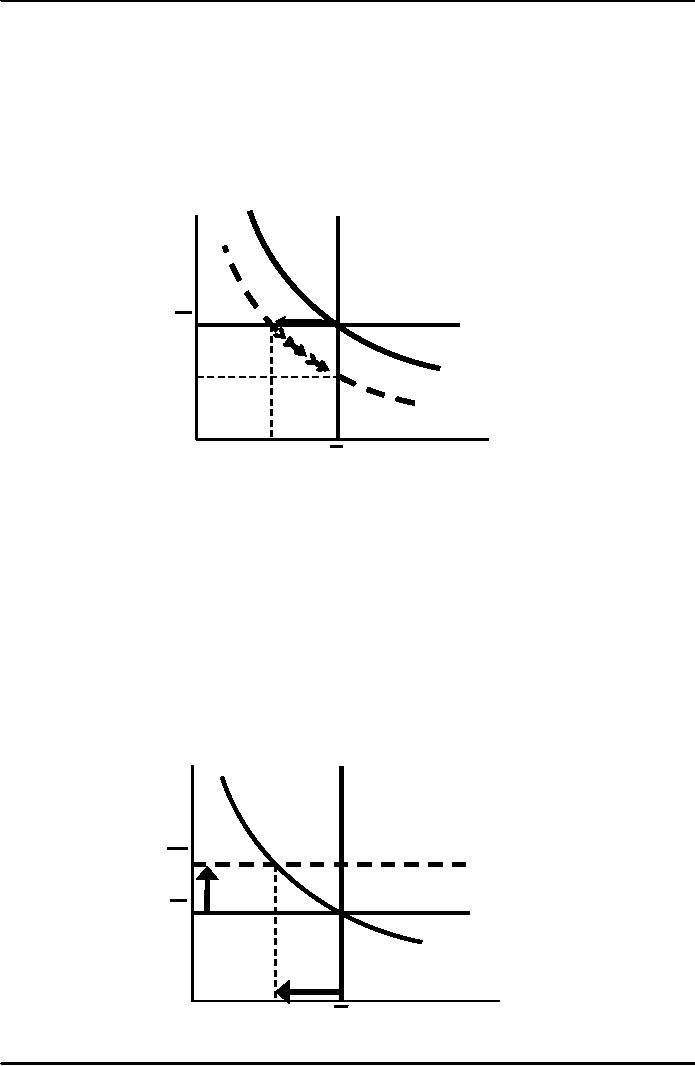
Macroeconomics
ECO 403
VU
The
effects of a negative demand
shock
The
shock shifts AD left,
causing output and
employment to fall in the
short run. Over
time,
prices
fall and the economy
moves down its demand
curve toward
full-employment.
P
LRAS
A
B
SRAS
P
C
AD1
P2
AD2
Y
Y2
Y
Supply
shocks
A
supply shock alters
production costs,
affects
the prices that firms
charge.
(Also
price shocks)
Examples
of adverse supply
shocks:
�
Bad
weather reduces crop yields,
pushing up
food
prices.
�
Workers
unionize, negotiate wage
increases.
�
New
environmental regulations require
firms to reduce emissions.
Firms charge higher
prices
to help cover the costs of
compliance.
(Favorable
supply shocks lower costs
and prices)
P
LRAS
B
SRAS2
P
2
A
SRAS1
P1
AD1
Y
Y2
Y
The
adverse supply shock moves
the economy to point
B.
103
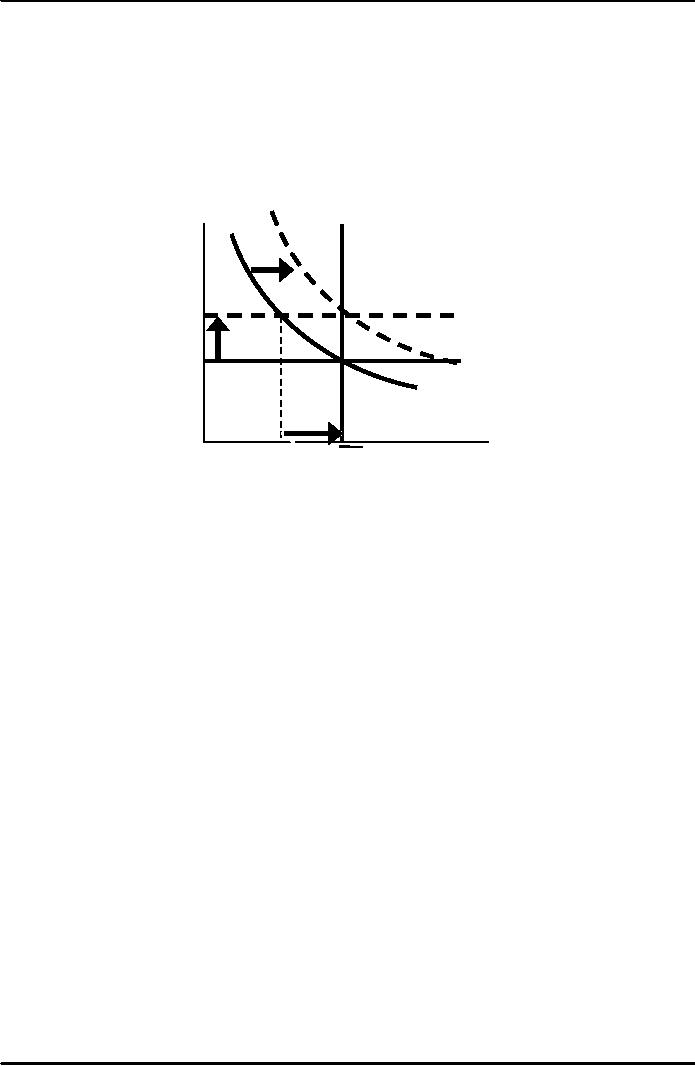
Macroeconomics
ECO 403
VU
Stabilization
policy
�
def:
policy actions aimed at
reducing the severity of
short-run economic
fluctuations.
�
Example:
Using monetary policy to
combat the effects of
adverse supply
shocks:
But
central bank
accommodates
the
shock
by raising
aggregate
demand.
P
LRAS
B
SRAS2
C
P1
A
AD2
P2
AD1
Y
Y2
Y1
1
Results:
P
is
permanently higher, but
Y
remains
at its full-employment
level.
The
1970s oil shocks
�
Early
1970s: OPEC coordinates a
reduction in the supply of
oil.
�
Oil
prices rose
11%
in 1973
68%
in 1974
16%
in 1975
�
Such
sharp oil price increases
are supply shocks because
they significantly
impact
production
costs and prices.
104
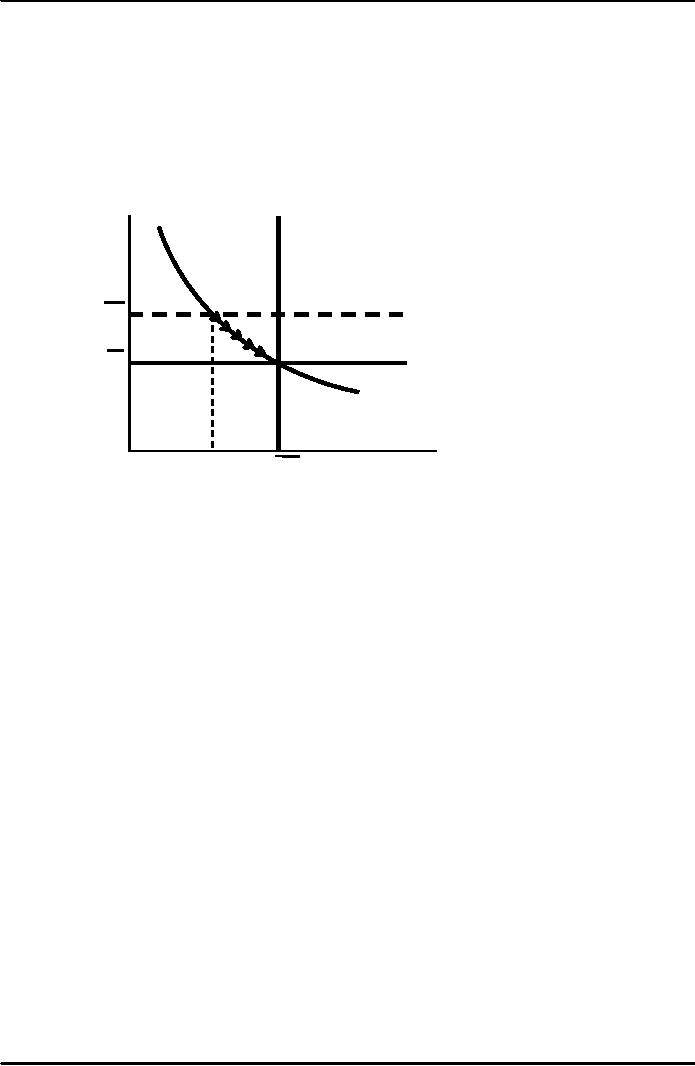
Macroeconomics
ECO 403
VU
The
oil price shock shifts
SRAS up, causing output
and employment to fall. In
absence
of
further price shocks, prices
will fall over time
and economy moves back
toward full
employment.
P
LRAS
B
SRAS2
P
2
A
SRAS1
P1
AD1
Y
Y2
Y1
Predicted
effects of the oil price
shock:
�
Inflation
↑
�
Output ↓
�
Unemployment
↑
105
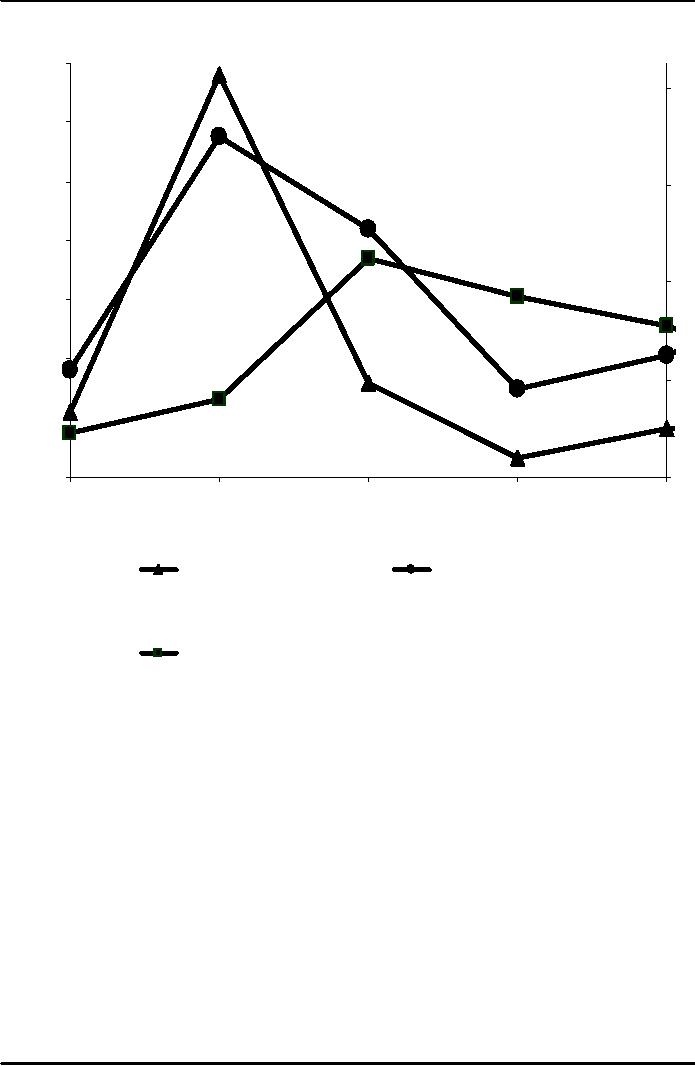
Macroeconomics
ECO 403
VU
...and
then a gradual
recovery.
70%
12%
60%
50%
10%
40%
8%
30%
20%
6%
10%
0%
4%
1973
1974
1975
1976
1977
Change
in oil prices (lef t
scale)
Inf
lation rate-CPI (right
scale)
Unemployment
rate (right scale)
106
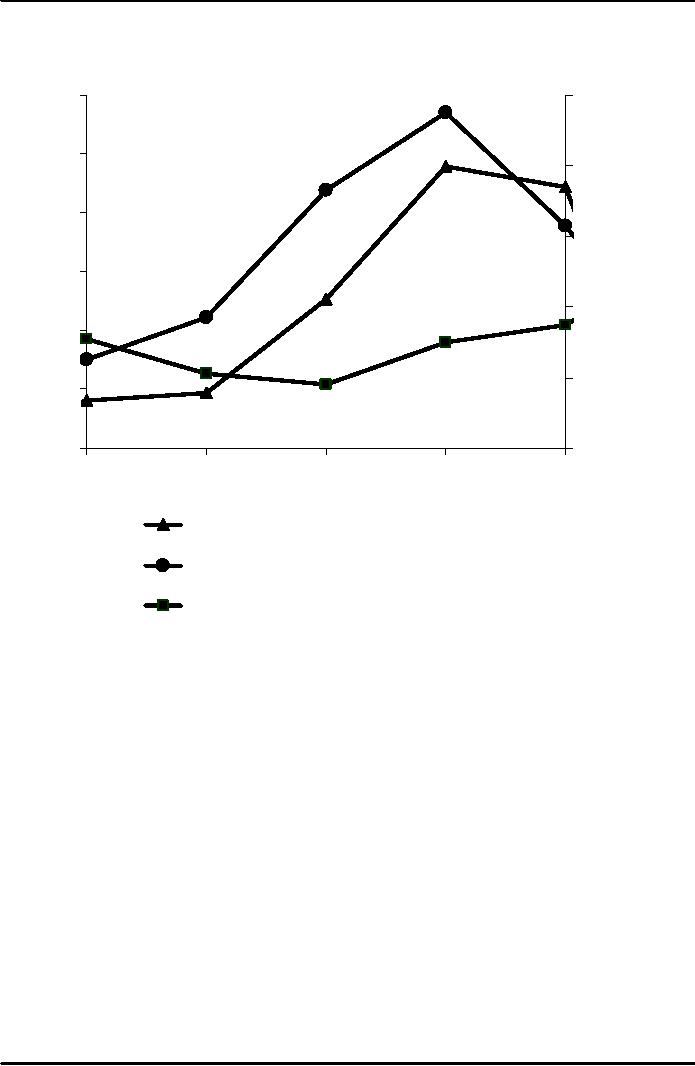
Macroeconomics
ECO 403
VU
Late
1970s: As economy was
recovering, oil prices shot
up again, causing another
huge
supply
shock!!!
60%
14%
50%
12%
40%
10%
30%
8%
20%
6%
10%
0%
4%
1977
1978
1979
1980
1981
Change
in oil prices (left
scale)
Inflation
rate-CPI (right
scale)
Unemployment
rate (right scale)
107
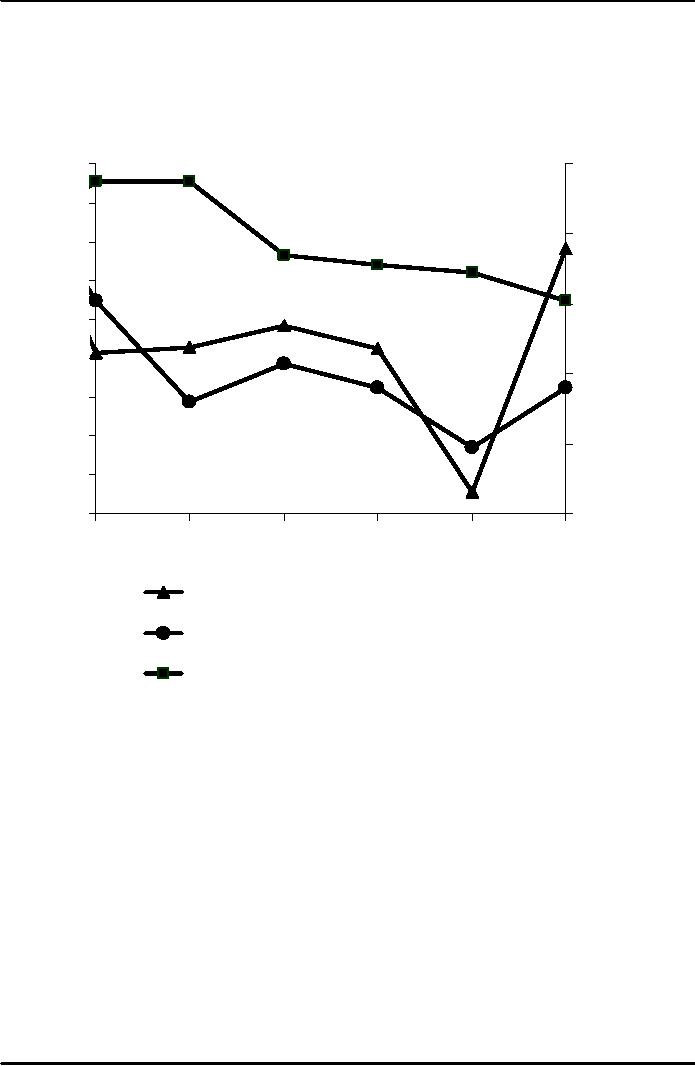
Macroeconomics
ECO 403
VU
The
1980s oil shocks
1980s:
A favorable supply shock--a
significant fall in oil
prices.
As
the model would predict,
inflation and unemployment
fell:
40%
10%
30%
8%
20%
10%
6%
0%
-10%
4%
-20%
-30%
2%
-40%
0%
-50%
1982
1983
1984
1985
1986
1987
Change
in oil prices (left
scale)
Inflation
rate-CPI (right
scale)
Unemployment
rate (right scale)
Keynesian
theory of Income &
Employment
�
Model
of aggregate demand & aggregate
supply
�
Long
run
Prices
flexible
Output
determined by factors of production &
technology
Unemployment
equals its natural
rate
�
Short
run
Prices
fixed
Output
determined by aggregate
demand
Unemployment is
negatively related to
output
108
Table of Contents:
- INTRODUCTION:COURSE DESCRIPTION, TEN PRINCIPLES OF ECONOMICS
- PRINCIPLE OF MACROECONOMICS:People Face Tradeoffs
- IMPORTANCE OF MACROECONOMICS:Interest rates and rental payments
- THE DATA OF MACROECONOMICS:Rules for computing GDP
- THE DATA OF MACROECONOMICS (Continued…):Components of Expenditures
- THE DATA OF MACROECONOMICS (Continued…):How to construct the CPI
- NATIONAL INCOME: WHERE IT COMES FROM AND WHERE IT GOES
- NATIONAL INCOME: WHERE IT COMES FROM AND WHERE IT GOES (Continued…)
- NATIONAL INCOME: WHERE IT COMES FROM AND WHERE IT GOES (Continued…)
- NATIONAL INCOME: WHERE IT COMES FROM AND WHERE IT GOES (Continued…)
- MONEY AND INFLATION:The Quantity Equation, Inflation and interest rates
- MONEY AND INFLATION (Continued…):Money demand and the nominal interest rate
- MONEY AND INFLATION (Continued…):Costs of expected inflation:
- MONEY AND INFLATION (Continued…):The Classical Dichotomy
- OPEN ECONOMY:Three experiments, The nominal exchange rate
- OPEN ECONOMY (Continued…):The Determinants of the Nominal Exchange Rate
- OPEN ECONOMY (Continued…):A first model of the natural rate
- ISSUES IN UNEMPLOYMENT:Public Policy and Job Search
- ECONOMIC GROWTH:THE SOLOW MODEL, Saving and investment
- ECONOMIC GROWTH (Continued…):The Steady State
- ECONOMIC GROWTH (Continued…):The Golden Rule Capital Stock
- ECONOMIC GROWTH (Continued…):The Golden Rule, Policies to promote growth
- ECONOMIC GROWTH (Continued…):Possible problems with industrial policy
- AGGREGATE DEMAND AND AGGREGATE SUPPLY:When prices are sticky
- AGGREGATE DEMAND AND AGGREGATE SUPPLY (Continued…):
- AGGREGATE DEMAND AND AGGREGATE SUPPLY (Continued…):
- AGGREGATE DEMAND AND AGGREGATE SUPPLY (Continued…)
- AGGREGATE DEMAND AND AGGREGATE SUPPLY (Continued…)
- AGGREGATE DEMAND AND AGGREGATE SUPPLY (Continued…)
- AGGREGATE DEMAND IN THE OPEN ECONOMY:Lessons about fiscal policy
- AGGREGATE DEMAND IN THE OPEN ECONOMY(Continued…):Fixed exchange rates
- AGGREGATE DEMAND IN THE OPEN ECONOMY (Continued…):Why income might not rise
- AGGREGATE SUPPLY:The sticky-price model
- AGGREGATE SUPPLY (Continued…):Deriving the Phillips Curve from SRAS
- GOVERNMENT DEBT:Permanent Debt, Floating Debt, Unfunded Debts
- GOVERNMENT DEBT (Continued…):Starting with too little capital,
- CONSUMPTION:Secular Stagnation and Simon Kuznets
- CONSUMPTION (Continued…):Consumer Preferences, Constraints on Borrowings
- CONSUMPTION (Continued…):The Life-cycle Consumption Function
- INVESTMENT:The Rental Price of Capital, The Cost of Capital
- INVESTMENT (Continued…):The Determinants of Investment
- INVESTMENT (Continued…):Financing Constraints, Residential Investment
- INVESTMENT (Continued…):Inventories and the Real Interest Rate
- MONEY:Money Supply, Fractional Reserve Banking,
- MONEY (Continued…):Three Instruments of Money Supply, Money Demand